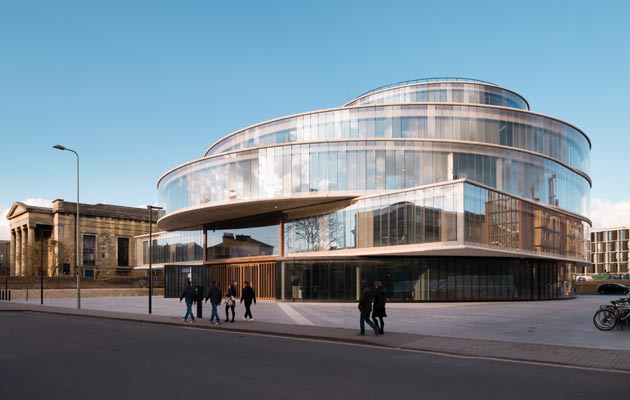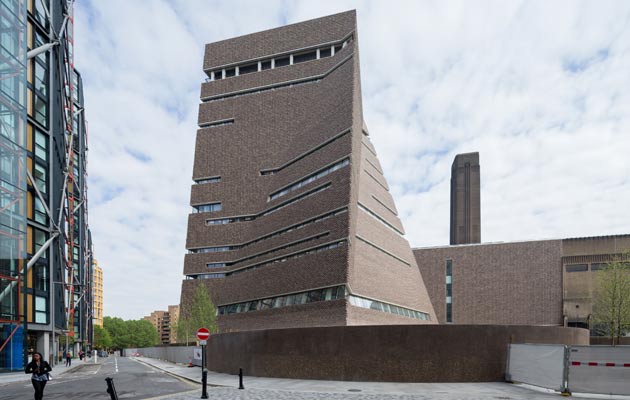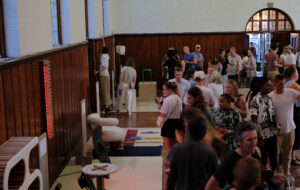|
|
||
|
Jacques Herzog talks to Icon about Herzog & de Meuron’s Tate Modern extension, opening on 17 June, and its Blavatnik School of Government in Oxford Jacques Herzog, one half of legendary Swiss architect Herzog & de Meuron, was on site in Oxford earlier this year to unveil the Blavatnik School of Government to the UK press. Icon spoke to him about the building, his responsibilities as an architect and, of course, the Tate Modern extension, Switch House – which opens on 17 June. ICON Can you sum up your design approach for Blavatnik? Jacques Herzog The building is surrounded by historic architecture of different styles and periods, which makes it difficult for a modern building with a large and complex programme to fit in. We decided on an architecture that evolves around a central courtyard, which inspires and will inspire all other spaces grouped around it. We resolved the urbanistic challenge with a strategy of stacking different forms to break down the size and monumentality of the new institute, and respond to the different scales of the surrounding buildings. We stacked different classical forms – such as a circle, a square, a horseshoe – onto each other. They cantilever in different ways, creating unexpected exterior forms and spaces. We believe this helps integrate the building into its historic context without mimicking any of its stylistic decoration. Besides urbanism and typology, we also insisted on a specific approach to materiality: we opted for sensual and natural materials – namely wood with different surface qualities. They have a tactile quality, they invite people to touch them and lean against them. ICON Given the prominent site and your responsibilities to the wider city of Oxford, I wondered what you thought about the role of the architect in today’s society? JH As an architect you should try to do a good building that is pleasing to the client, but also pleasing to the rest of society – pleasing in the sense not just of being nice, but of really working well over time. Buildings that work over time will survive and become a real asset for a community. ICON Will this building stand for a long time? JH How can we know? But, yes, that is always the expectation because a building is always connected with a lot of money so you should not waste it. This is an economical as well as ecological point. Also, I think we have a certain social responsibility, because buildings are part of the city and cities are made for people to grow as a society together. A building should not be hermetic, especially if it is a school. Buildings should be something that people can be proud of because they are part of their city. They should be different from other buildings in other cities. They should be made for a specific place. This building is made for this place at this moment in time. |
Interview James McLachlan
Above: Jacques Herzog, one half of Swiss architecture practice Herzog and de Meuron (image by Norbert Schoerner/@dayfornightlab) |
|
|
||
|
The Blavatnik School of Government in Oxford |
||
|
ICON You have likened it to a concert hall or auditorium – is it important to create a sense of drama or excitement with a building? JH Drama is a difficult word. We sit here in this space that spills out from the offices. You can work outside your office around the central atrium [gestures to the atrium]. Is that a dramatic space? It is rather unusual for a school. It reminds you of related typologies, such as a parliament or a public forum. It is space that has a character, a personality. ICON You mentioned the social responsibilities of the architect. Can politics and architecture ever be separated? JH No, you cannot separate them. Architecture has a political dimension – in many ways, it reflects the economic, social and psychological conditions of its time. It reveals why and how architectures in a city were conceived. Here, at the Blavatnik School of Government, private money was invested for a teaching platform for people who are supposed to take on important political positions in their countries in the future. So, in some way, the invested private money in Oxford will be for the benefit of many people also outside this country. |
||
|
The Tate extension is surrounded by luxury glass towers |
||
|
ICON The Tate Modern extension – one of the most significant buildings in London – is near completion. I wondered if London is constructing enough of these cultural buildings, as we seem to be putting up a lot of glass towers? JH Cultural institutions are often magnets for a city. In the case of Tate Modern this became obvious, since developers have built many such buildings around the gallery since it moved here in the 1990s. The problem is that often such developments are pure money machines without any contribution to the society at large. They are often apartment buildings that are hardly used or occupied by real people who would generate and inspire real life in the city. ICON It is a very different building to the one originally proposed. I wondered how you view your original proposal? JH Before we found this solution we experimented with other options, such as stacked glass cubes. We finally moved towards brick, which integrates the new and existing parts much better. These two parts now form an organic whole, and that is what we and the client tried to achieve. The visitors should be inside one museum with different spaces and atmospheres – not in a museum with an ‘added wing’. Switch House by Herzog & de Meuron opens on 17 June 2016 |
||



















